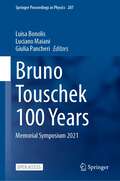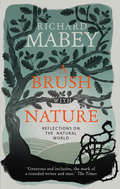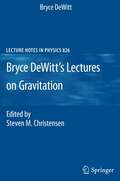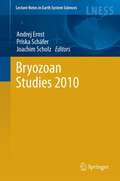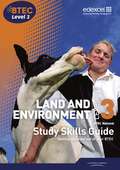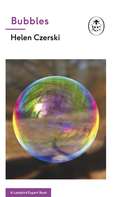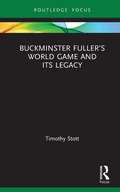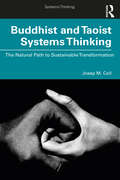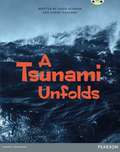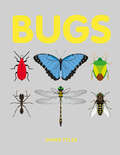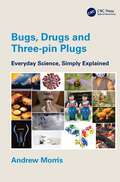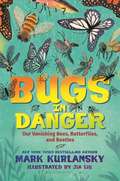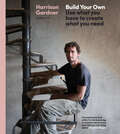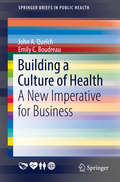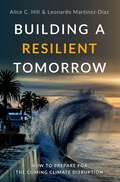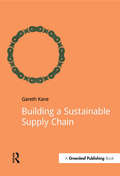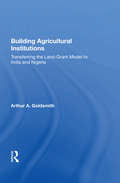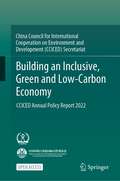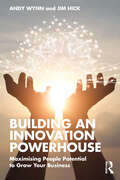- Table View
- List View
Bruno Touschek 100 Years: Memorial Symposium 2021 (Springer Proceedings in Physics #287)
by Luisa Bonolis Luciano Maiani Giulia PancheriThis open access book celebrates the contribution of Bruno Touschek to theoretical physics and particle colliders in Europe. It contains direct testimonials from his former students, collaborators, and eminent scientists, among them, two Nobel Prize winners in Physics, Giorgio Parisi and Carlo Rubbia. It reviews the main developments in theoretical and accelerator physics in the second half of the twentieth century, while at the same time providing an overview of future prospects worldwide. This book is unique in that it will be of interest to historians of physics and also to the younger generation of researchers. Through the contribution of the leading protagonists, the interested scholar will learn about the past, present status, and relevance of both theoretical and experimental accelerator physics. The overview of Bruno Touschek’s life and works across Europe, from pre-war Vienna to Germany, the UK, Italy, and France, adds a human dimension to the scientific narration, while the open access status makes this laudatory book available to anyone with interest.
A Brush With Nature: 25 years of personal reflections on nature
by Richard MabeyDescribed as 'Britain's greatest living nature writer', Richard Mabey has revealed his passion for the natural world in eloquent stories for BBC Wildlife Magazine. This volume features his favourite pieces and presents a fascinating and inspiring view of the changing natural landscape in which we live.Peppered throughout with references to the heritage of nature writing, and great writers from Richard Jefferies and John Clare to Roger Deakin and Robert MacFarlane, A Brush With Nature is part memoir, part nature journal, part social history, giving us a unique insight into a nature lover's reflections over a quarter of a century.
Bryce DeWitt's Lectures on Gravitation: Edited by Steven M. Christensen (Lecture Notes in Physics #826)
by Bryce DeWittBryce DeWitt, a student of Nobel Laureate Julian Schwinger, was himself one of the towering figures in 20th century physics, particularly renowned for his seminal contributions to quantum field theory, numerical relativity and quantum gravity. In late 1971 DeWitt gave a course on gravitation at Stanford University, leaving almost 400 pages of detailed handwritten notes. Written with clarity and authority, and edited by his former student Steven Christensen, these timeless lecture notes, containing material or expositions not found in any other textbooks, are a gem to be discovered or re-discovered by anyone seriously interested in the study of gravitational physics.
Bryozoan Studies 2010 (Lecture Notes in Earth System Sciences #143)
by Andrej Ernst, Priska Schäfer and Joachim ScholzBryozoa are a colonial animal phylum with a long evolutionary history, having existed from the early Ordovician (480 My) onward and still flourishing today. Several mass extinctions in earth history shaped and triggered bryozoan evolution through drastic turnover of faunas and new evolutionary lineages. Bryozoa are widespread across all latitudes from Equator to Polar Regions and occur in marine and freshwater environments. They are shaping benthic ecosystems and recording ambient environmental conditions in their skeletons. The book provides a synthesis of the current main topics of research in the field of Bryozoology including combined research on both extant, and extinct taxa. Fields or current research span molecular genetics and phylogeny, life history, reproduction and anatomy, biodiversity and evolutionary patterns in time and space, taxonomy, zoogeography, ecology, sediment interactions, and climate response.
BTEC Level 3 National Study Skills Guide In Land And Environment
by Business Technician Education Council (Great Britain) Staff Edexcel Organization StaffYour Study Skills Guide is designed to help you develop the skills you need to successfully complete your BTEC National course.
Bubbles: A Ladybird Expert Book (The Ladybird Expert Series)
by Helen CzerskiPart of the new Ladybird Expert series, Bubbles is a clear, surprising and entertaining introduction to the science of bubbles. Bubbles are beautiful, ephemeral, fun, fragile, jolly and slightly unpredictable. We're all familiar with them, but we don't often ask what they actually are. The great scientists of the Western world - Robert Hooke, Isaac Newton, Lord Rayleigh and more - studied bubbles seriously. They recognised that they had a lot to say about the nature of the physical world, and they poked, prodded and listened to find out what it was. In the years since, we've learned that this bulbous arrangement of liquid and gas does things that neither the gas or the liquid could do by itself. Written by the celebrated physicist and oceanographer Helen Czerski, Bubbles explores how everything from the way drinks taste to the Earth's temperature are influenced by bubbles. This book has a message: never underestimate a bubble!
Buckminster Fuller’s World Game and Its Legacy (Routledge Focus on Art History and Visual Studies)
by Timothy StottThis book studies R. Buckminster Fuller’s World Game and similar world games, past and present. Proposed by Fuller in 1964 and first played in colleges and universities across North America at a time of growing ecological crisis, the World Game attempted to turn data analysis, systems modelling, scenario building, computer technology, and information design to more egalitarian ends to meet human needs. It challenged players to redistribute finite planetary resources more equitably, to ‘make the world work’. Criticised and lauded in equal measure, the World Game has evolved through several formats and continues today in correspondence with debates on planetary stewardship, gamification, data management, and the democratic deficit. This book looks again at how the World Game has been played, focusing on its architecture, design, and gameplay. With hindsight, the World Game might appear naïve, utopian, or technocratic, but we share its problems, if not necessarily its solutions. Such a study will be of interest to scholars working in art history, design history, game studies, media studies, architecture, and the environmental humanities.
Buckminster Fuller’s World Game and Its Legacy (Routledge Focus on Art History and Visual Studies)
by Timothy StottThis book studies R. Buckminster Fuller’s World Game and similar world games, past and present. Proposed by Fuller in 1964 and first played in colleges and universities across North America at a time of growing ecological crisis, the World Game attempted to turn data analysis, systems modelling, scenario building, computer technology, and information design to more egalitarian ends to meet human needs. It challenged players to redistribute finite planetary resources more equitably, to ‘make the world work’. Criticised and lauded in equal measure, the World Game has evolved through several formats and continues today in correspondence with debates on planetary stewardship, gamification, data management, and the democratic deficit. This book looks again at how the World Game has been played, focusing on its architecture, design, and gameplay. With hindsight, the World Game might appear naïve, utopian, or technocratic, but we share its problems, if not necessarily its solutions. Such a study will be of interest to scholars working in art history, design history, game studies, media studies, architecture, and the environmental humanities.
Buddhist and Taoist Systems Thinking: The Natural Path to Sustainable Transformation (Systems Thinking)
by Josep M. CollBuddhist and Taoist Systems Thinking explores a radical new conception of business and management. It is grounded on the reconnection of humans with nature as the new competitive advantage for living organizations and entrepreneurs that aspire to regenerate the economy and drive a positive impact on the planet, in the context of the Anthropocene. Organizations today struggle in finding a balance between maximizing profits and generating value for their stakeholders, the environment and the society at large. This happens in a paradigm shift characterized by unprecedented levels of exponential change and the emergence of disruptive technologies. Adaptability, thus, is becoming the new business imperative. How can, then, entrepreneurs and organizations constantly adapt and, at the same time, design the sustainable futures they’d like? This book uniquely explores the benefits of applying Buddhist and Taoist Systems Thinking to sustainable management. Grounded in Taoist and Zen Buddhist philosophies, it offers a modern scientific perspective fundamentally based on the concepts of bio-logical adaptability and lifefulness amidst complexity and constant change. The book introduces the new concept of the Gaia organization as a living organism that consciously helps perpetuate the conditions for life on the planet. It is subject to the natural laws of transformation and the principles of oneness, emptiness, impermanence, balance, self-regulation and harmonization. Readers will find applied Eastern systems theories such as the Yin-Yang and the Five Elements operationalized through practical methodologies and tools such as T-Qualia and the Zen Business model. They are aimed at guiding Gaia organizations and entrepreneurs in leading sustainable transformations and qualifying economic growth. The book offers a vital toolkit for purpose-driven practitioners, management researchers, students, social entrepreneurs, evaluators and change-makers to reinvent, create and mindfully manage sustainable and agile organizations that drive systemic transformation.
Buddhist and Taoist Systems Thinking: The Natural Path to Sustainable Transformation (Systems Thinking)
by Josep M. CollBuddhist and Taoist Systems Thinking explores a radical new conception of business and management. It is grounded on the reconnection of humans with nature as the new competitive advantage for living organizations and entrepreneurs that aspire to regenerate the economy and drive a positive impact on the planet, in the context of the Anthropocene. Organizations today struggle in finding a balance between maximizing profits and generating value for their stakeholders, the environment and the society at large. This happens in a paradigm shift characterized by unprecedented levels of exponential change and the emergence of disruptive technologies. Adaptability, thus, is becoming the new business imperative. How can, then, entrepreneurs and organizations constantly adapt and, at the same time, design the sustainable futures they’d like? This book uniquely explores the benefits of applying Buddhist and Taoist Systems Thinking to sustainable management. Grounded in Taoist and Zen Buddhist philosophies, it offers a modern scientific perspective fundamentally based on the concepts of bio-logical adaptability and lifefulness amidst complexity and constant change. The book introduces the new concept of the Gaia organization as a living organism that consciously helps perpetuate the conditions for life on the planet. It is subject to the natural laws of transformation and the principles of oneness, emptiness, impermanence, balance, self-regulation and harmonization. Readers will find applied Eastern systems theories such as the Yin-Yang and the Five Elements operationalized through practical methodologies and tools such as T-Qualia and the Zen Business model. They are aimed at guiding Gaia organizations and entrepreneurs in leading sustainable transformations and qualifying economic growth. The book offers a vital toolkit for purpose-driven practitioners, management researchers, students, social entrepreneurs, evaluators and change-makers to reinvent, create and mindfully manage sustainable and agile organizations that drive systemic transformation.
Bug Club Comprehension Year 6 A Tsunami Unfolds (PDF)
by Susan Korman Kimiko KajikawaThe 2011 Japanese tsunami was one of the most powerful natural disasters ever recorded. What was it like to be there, and what happened next'. Track the tsunami through the experiences of people who lived through this extraordinary event.
Bugs
by Simon TylerPacked with stunning, detailed illustrations and astonishing facts, this book will introduce you to some of the strangest, scariest, biggest, smallest and most beautiful insects around.
Bugs, Drugs and Three-pin Plugs: Everyday Science, Simply Explained
by Andrew MorrisFor the millions who remain curious about the world around them, but gained little from science at school, this book offers a way forward. Based on live discussions with adults from all walks of life, each chapter begins with an everyday experience, like swallowing a pill or watching a bee on a flower. The main scientific ideas underlying each topic are then explored, so that understanding of a set of fundamental concepts builds up gradually throughout the book. In contrast to more traditional approaches to science learning, topics range freely across the subject areas. The story of Covid, for example includes aspects of biology, chemistry, mathematics and social behaviour. Plain English is used throughout and mathematical expressions are avoided. Key points are illustrated with clear diagrams and photographs. By drawing on questions and perspectives of ordinary people, the book offers an introduction to basic ideas in science as a whole, rather than any one particular subject. For the adult wishing to make good a gap in their understanding it provides a starting point for entering the rich world of popular science.
Bugs, Drugs and Three-pin Plugs: Everyday Science, Simply Explained
by Andrew MorrisFor the millions who remain curious about the world around them, but gained little from science at school, this book offers a way forward. Based on live discussions with adults from all walks of life, each chapter begins with an everyday experience, like swallowing a pill or watching a bee on a flower. The main scientific ideas underlying each topic are then explored, so that understanding of a set of fundamental concepts builds up gradually throughout the book. In contrast to more traditional approaches to science learning, topics range freely across the subject areas. The story of Covid, for example includes aspects of biology, chemistry, mathematics and social behaviour. Plain English is used throughout and mathematical expressions are avoided. Key points are illustrated with clear diagrams and photographs. By drawing on questions and perspectives of ordinary people, the book offers an introduction to basic ideas in science as a whole, rather than any one particular subject. For the adult wishing to make good a gap in their understanding it provides a starting point for entering the rich world of popular science.
Bugs in Danger: Our Vanishing Bees, Butterflies, and Beetles
by Mark KurlanskyBy now you've probably heard that bees are disappearing--but they aren't the only species at risk. Populations of fireflies, butterflies, and ladybugs have all been declining in recent years, too. This middle grade nonfiction explains the growth, spread, and recent declines of each of these four types of insects. Exploring human causes, like the Baltimore electric company that collected fireflies to attempt to harness their phosphorescent lighting source, to natural occurrences, like the mysterious colony collapse disorder that plagues bee populations, master nonfiction storyteller Mark Kurlansky shows just how much bugs matter to our world.
Build Your Own: Use What You Have to Create What You Need
by Harrison GardnerMaking, maintaining and mending our own homes is part of what makes us human. It is a skill that was alive and well until just a few generations ago. Harrison Gardner is a man on a mission to help us rediscover the lost art of building our own home while treading more lightly on the planet in the process.Build Your Own explores the principles of construction and outlines a multitude of practices and methods that enable you to build a home with the materials available to you. Techniques such as bricklaying, plastering, flooring, making mortar and building walls are distilled into simple, practical recipes anyone can try themselves.Whether you plan to build your own structure, are curious about the idea or are working with professionals, Build Your Own is an essential tool that shows that anyone can learn to build – and perhaps everyone should.
Building a Culture of Health: A New Imperative for Business (SpringerBriefs in Public Health)
by John A. Quelch Emily C. BoudreauThis ambitious volume sets out to understand how every company impacts public health and introduces a robust model, rooted in organizational and scientific knowledge, for companies committed to making positive contributions to health and wellness. Focusing on four interconnected areas of corporate impact, it not only discusses the business imperative of promoting a healthier society and improved living conditions worldwide, but also provides guidelines for measuring a company’s population health footprint. Examples, statistics and visuals showcase emerging corporate involvement in public health and underscore the business opportunities available to companies that invest in health. The authors offer a detailed roadmap for optimizing health-promoting actions in a rapidly evolving business and social climate across these core areas: Planning and building a culture of healthConsumer health: How organizations affect the safety, integrity, and healthfulness of the products and services they offer to their customers and end consumersEmployee health: How organizations affect the health of their employees (e.g., provision of employer-sponsored health insurance, workplace practices and wellness programs)Community health: How organizations affect the health of the communities in which they operate and do businessEnvironmental Health: How organizations' environmental policies (or lack thereof) affect individual and population healthImplementing and sustaining a culture of health Building a Culture of Health clarifies both a mission and a vision for use by MPH and MBA students in health management, professors in schools of public health and business schools, and business leaders and chief medical officers in health care and non-health care businesses.
Building a Resilient Tomorrow: How to Prepare for the Coming Climate Disruption
by Alice C. Hill Leonardo Martinez-DiazClimate change impacts-more heat, drought, extreme rainfall, and stronger storms-have already harmed communities around the globe. Even if the world could cut its carbon emissions to zero tomorrow, further significant global climate change is now inevitable. Although we cannot tell with certainty how much average global temperatures will rise, we do know that the warming we have experienced to date has caused significant losses, and that the failure to prepare for the consequences of further warming may prove to be staggering. Building a Resilient Tomorrow does not dwell on overhyped descriptions of apocalyptic climate scenarios, nor does it travel down well-trodden paths surrounding the politics of reducing carbon emissions. Instead, it starts with two central facts: climate impacts will continue to occur, and we can make changes now to mitigate their effects. While squarely confronting the scale of the risks we face, this pragmatic guide focuses on solutions-some gradual and some more revolutionary-currently being deployed around the globe. Each chapter presents a thematic lesson for decision-makers and engaged citizens to consider, outlining replicable successes and identifying provocative recommendations to strengthen climate resilience. Between animated discussions of ideas as wide-ranging as managed retreat from coastal hot-zones to biological approaches for resurgent climate-related disease threats, Alice Hill and Leonardo Martinez-Diaz draw on their personal experiences as senior officials in the Obama Administration to tell behind-the-scenes stories of what it really takes to advance progress on these issues. The narrative is dotted with tales of on-the-ground citizenry, from small-town mayors and bankers to generals and engineers, who are chipping away at financial disincentives and bureaucratic hurdles to prepare for life on a warmer planet. For readers exhausted by today's paralyzing debates on yearly "fluke" storms or the existence of climate change, Building a Resilient Tomorrow offers better ways to manage the risks in a warming planet, even as we work to limit global temperature rise.
Building a Resilient Tomorrow: How to Prepare for the Coming Climate Disruption
by Leonardo Martinez-Diaz Alice C. HillClimate change impacts-more heat, drought, extreme rainfall, and stronger storms-have already harmed communities around the globe. Even if the world could cut its carbon emissions to zero tomorrow, further significant global climate change is now inevitable. Although we cannot tell with certainty how much average global temperatures will rise, we do know that the warming we have experienced to date has caused significant losses, and that the failure to prepare for the consequences of further warming may prove to be staggering. Building a Resilient Tomorrow does not dwell on overhyped descriptions of apocalyptic climate scenarios, nor does it travel down well-trodden paths surrounding the politics of reducing carbon emissions. Instead, it starts with two central facts: climate impacts will continue to occur, and we can make changes now to mitigate their effects. While squarely confronting the scale of the risks we face, this pragmatic guide focuses on solutions-some gradual and some more revolutionary-currently being deployed around the globe. Each chapter presents a thematic lesson for decision-makers and engaged citizens to consider, outlining replicable successes and identifying provocative recommendations to strengthen climate resilience. Between animated discussions of ideas as wide-ranging as managed retreat from coastal hot-zones to biological approaches for resurgent climate-related disease threats, Alice Hill and Leonardo Martinez-Diaz draw on their personal experiences as senior officials in the Obama Administration to tell behind-the-scenes stories of what it really takes to advance progress on these issues. The narrative is dotted with tales of on-the-ground citizenry, from small-town mayors and bankers to generals and engineers, who are chipping away at financial disincentives and bureaucratic hurdles to prepare for life on a warmer planet. For readers exhausted by today's paralyzing debates on yearly "fluke" storms or the existence of climate change, Building a Resilient Tomorrow offers better ways to manage the risks in a warming planet, even as we work to limit global temperature rise.
Building a Sustainable Supply Chain
by Gareth KaneThe massive oil spill in the Gulf of Mexico in 2010 was not caused by BP, but by a contractor, yet BP got the blame. The toxic waste from the production of Apple products dumped in China in 2011 was not dumped by Apple, but by a supplier, yet Apple got the blame. The horsemeat found in beef burgers in 2013 was not added by Tesco, but by a supplier, yet Tesco got the blame. In all three cases, blame for the damage caused by suppliers floated up through the supply chain until it lodged with the big brand at the top. No longer can companies constrain their corporate responsibility within the factory fence, as that boundary is not recognized by outside observers. This situation is exacerbated by the fact that the majority of most organizations’ environmental footprint lies in their supply chain. This means that, to address the sustainability agenda in a meaningful way, they must tackle the impacts of their suppliers. Unfortunately this is a huge challenge as visibility and influence diminishes quickly as you start to work your way down through the layers of suppliers. This book gives a quick but comprehensive guide to the most effective techniques to help you proactively address environmental risks in the supply chain. It covers the following: the business case for a sustainable supply chain; supply chains and sustainability: the big picture; making supply chains sustainable: the fundamentals; basic techniques: the "hard yards" of green procurement; intermediate techniques: those requiring changes to operations and products/services; advanced techniques: changes to the business model and corporate philosophy.The book draws upon exclusive interviews with top sustainability practitioners along with the practical experiences of the author to provide real world examples at the cutting edge.
Building a Sustainable Supply Chain (Doshorts Ser.)
by Gareth KaneThe massive oil spill in the Gulf of Mexico in 2010 was not caused by BP, but by a contractor, yet BP got the blame. The toxic waste from the production of Apple products dumped in China in 2011 was not dumped by Apple, but by a supplier, yet Apple got the blame. The horsemeat found in beef burgers in 2013 was not added by Tesco, but by a supplier, yet Tesco got the blame. In all three cases, blame for the damage caused by suppliers floated up through the supply chain until it lodged with the big brand at the top. No longer can companies constrain their corporate responsibility within the factory fence, as that boundary is not recognized by outside observers. This situation is exacerbated by the fact that the majority of most organizations’ environmental footprint lies in their supply chain. This means that, to address the sustainability agenda in a meaningful way, they must tackle the impacts of their suppliers. Unfortunately this is a huge challenge as visibility and influence diminishes quickly as you start to work your way down through the layers of suppliers. This book gives a quick but comprehensive guide to the most effective techniques to help you proactively address environmental risks in the supply chain. It covers the following: the business case for a sustainable supply chain; supply chains and sustainability: the big picture; making supply chains sustainable: the fundamentals; basic techniques: the "hard yards" of green procurement; intermediate techniques: those requiring changes to operations and products/services; advanced techniques: changes to the business model and corporate philosophy.The book draws upon exclusive interviews with top sustainability practitioners along with the practical experiences of the author to provide real world examples at the cutting edge.
Building Agricultural Institutions: Transferring The Land-grant Model To India And Nigeria
by Arthur A GoldsmithShortly after World War II the United States began to export to developing countries the ''land-grant model"-its system of applied agricultural science. This system is made up of subnational agricultural universities, extension services, and experiment stations, and also of national-level organizations to support and coordinate agricultural develop
Building Agricultural Institutions: Transferring The Land-grant Model To India And Nigeria
by Arthur A GoldsmithShortly after World War II the United States began to export to developing countries the ''land-grant model"-its system of applied agricultural science. This system is made up of subnational agricultural universities, extension services, and experiment stations, and also of national-level organizations to support and coordinate agricultural develop
Building an Inclusive, Green and Low-Carbon Economy: CCICED Annual Policy Report 2022
by CCICEDThis open access book introduces the major environmental green development issues from six major themes carbon neutrality, nature-based solution, watershed management and climate adaptation, BRI green development, sustainable food supply chain, ecosystem-based integrated ocean management focusing on the progress of China’s environment and development policies from 2021 accomplishments. It is based on the research outputs of CCICED in the year of 2021, which marks China’s start point of implementation of its 14th Five-Year Plan when world economy also strived to recover from the pandemic.
Building an Innovation Powerhouse: Maximising People Potential to Grow Your Business
by Andy Wynn Jim HickIn Building an Innovation Powerhouse you will learn how to maximise the potential of people to grow your business. Authors Andy Wynn and Jim Hick dive deep into the most complex aspect of innovation and skilfully deconstruct the multi-dimensional complexities of working with people to reveal the secrets of how to handle the challenges of innovation. Building an Innovation Powerhouse uncovers the inner workings of industry giants, including Boston Consulting Group, Google, Hexcel, Kennametal, DuPont, CeramTec, Novartis, and many more, and explains exactly how these organisations and their leaders have motivated people to create a culture of innovation. A roadmap clearly sets out change in the following:1. Culture – how to guide an organisation to work holistically.2. Teams – how to ensure collaboration is laser-focused on business growth.3. Individuals – what people can do to become more creative and contribute to business success.4. Diversity – how to develop the right mix of skillsets, backgrounds and viewpoints.5. Leadership – what business leaders need to do to ensure that all levels of the business are heading in the right direction and delivering growth. Written with true insight by renowned leaders in their fields and enhanced by valuable case studies and contributions from numerous senior executives who have a real passion for stimulating innovation to drive business growth, this book is essential reading for businesses looking to transform into an innovation powerhouse.
